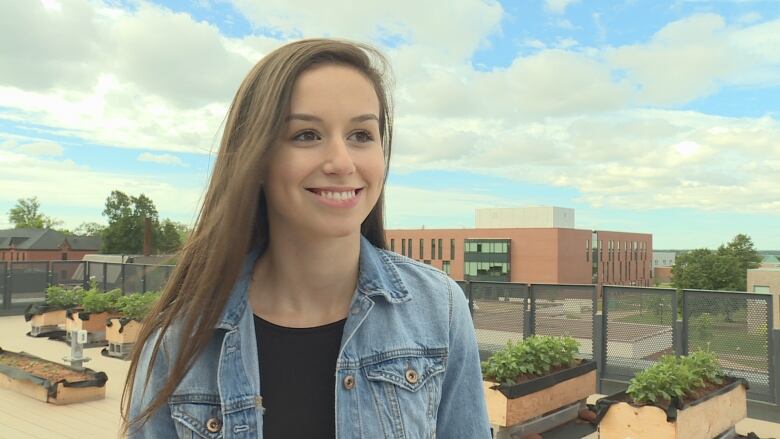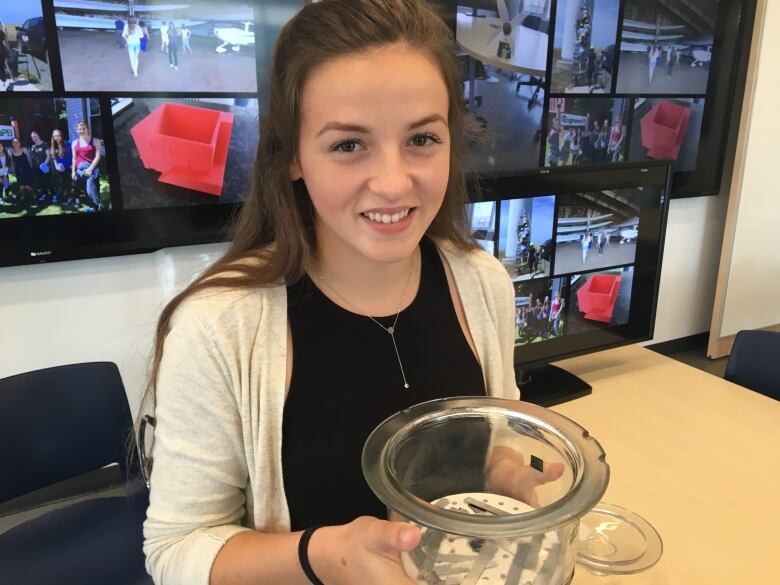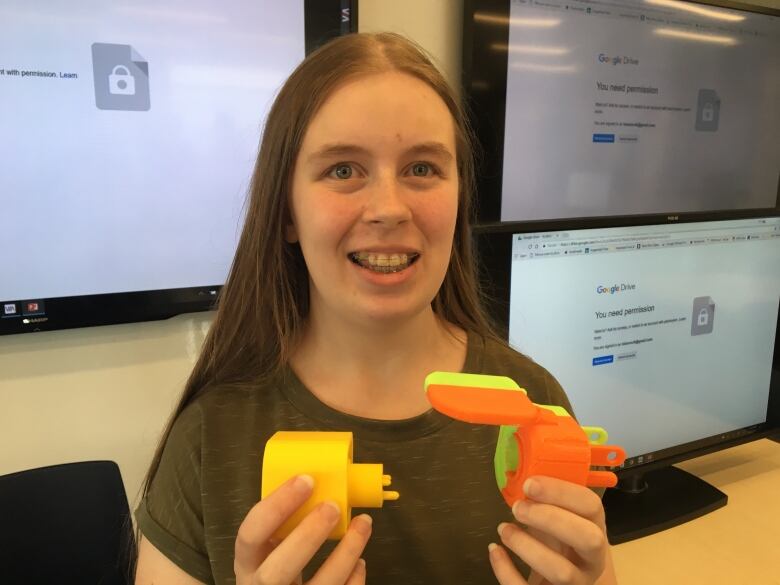Young women solve real world problems through new engineering program
'It felt like I was actually doing something of significance and making an impact'

Six high school students engineered their own projects, which helpsolve real world problems, as part of a new program at UPEI encouraging young women to think about careers in engineering.
The students were chosen from 32 girls that applied for theinaugural year.
Erin Chiasson designed a watering system for the potato plants that growon the roof of the engineering building at UPEI.
There isn't a water source, so people were carrying individual buckets to the roof by hand.
With Chiasson's system, 48 litres are brought up at once and there's a pump and nozzle for watering with the right amount of pressure as not to damage the plants.

"It's actually really amazing. I didn't really think that I'd be able to do something like this because I don't have any university education, I'm just going into Grade 12," said Chiasson.
"If you kind of have the right mindset and you look at things with an approach like there's a problem here, but how could I do something to fix it then you'll always be able to come up with a solution," she said.
Making an impact

Katia Hughesstudied what kinds of conditions cause erosion on wind turbine blades and what kind of inspection techniques can be used other than just visually looking at the blades.
"It felt like I was actually doing something of significance and making an impact and that's something that is really important to me because I want to do something great with my professional career and my life," said Hughes.

Melanie Rodger designed a product to help people who have lost an eye and wear aprosthetic and experiencediscomfort. She came up with a lining for false eyes.

Sydney Wheatley did a project about different kinds of coatings that can prevent against corrosion. She did a couple of different tests on multiple coatings to try and figure out which one would work the best.
Projects focused on helping people
Alyssa Laughlin did a project related to ligament injuries. She created a heated brace to warm up the muscle so the ACL will be less likely to become damaged.

Abbygale Lewis-Fox focused her project on trying to make electric plugs easier to use, especially for people with mobility issues.She came up with a prototype that uses magnets, making plugging in less of a process.

The program wrapped up Thursday with final presentations from the students. Program organizers hope to continue with the program next year.
- MORE P.E.I. NEWS |Skating school teaches Chinese students how to play Canada's national sport
- MORE P.E.I. NEWS |Brothers bet big on their handyman products business












_(720p).jpg)


 OFFICIAL HD MUSIC VIDEO.jpg)
.jpg)



























































































